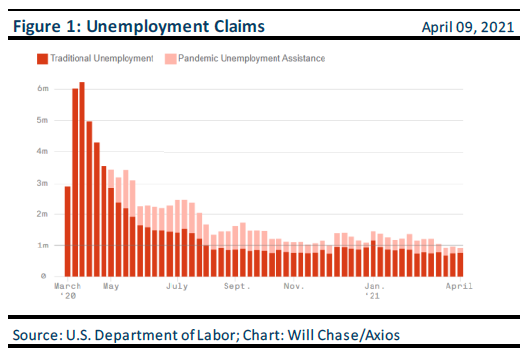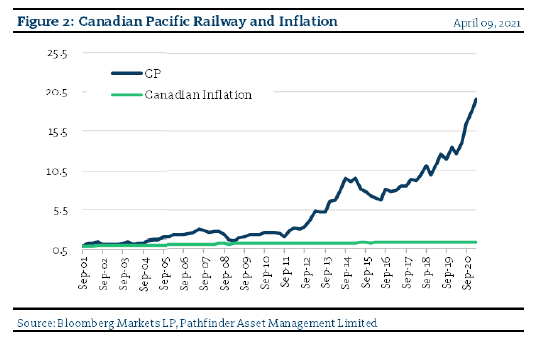Inflation Strategy Continued
We last wrote about our inflation strategy in mid-March and concluded that while volatility in certain sectors of the stock market has increased, we would view any substantial drawdown as an opportunity to add to good quality companies with substantial earnings power. We also noted that for the medium-term, we prefer to have our capital invested in equities rather than cash or fixed income. A week later, we wrote a note about the positive attributes of the proposed merger between Canadian Pacific Railway Limited (TSX: CP) and Kansas City Southern (NYSE: KSU). We noted that while we thought that CP paid a high price to potentially acquire KSU, over the long-term, we felt it was a smart strategy. We believe the company would now have the infrastructure in place to provide a real challenge to the other major Class 1 Railroads, given that it would truly be able to provide a Canada to Mexico link for shipping in North America.
We bring the above two points up today to demonstrate how we will approach what we believe will be coming opportunities to establish long-term positions in high quality companies because of financial market volatility.
- Figure 1 presents a chart from Axios which shows that weekly jobless claims are still running above 1 million claims per week. We suspect that this will act as a drag on wage inflation allowing central banks to manage expectations through what is expected to be a strong economic boom over the next 2 years.

- Figure 2 presents the price of CP stock from 2001 (19.6x) against the Canadian Consumer price index (1.4x). As we noted, rail assets are physical and essentially irreplaceable. The contracts that rail companies have with customers include price adjustments for observed inflation and rail networks provide an irreplaceable service (i.e. everyone needs goods and products). This results in what we believe is an inflation protected cash flow stream that provides significant value in the long run. If we can buy that stream at a discount because of stock market volatility we will.

“This means that” as volatility in certain sectors of the stock market has increases due to changing inflation expectations, we will add these types of good quality growing free cash flow organizations to the portfolio.
National Instrument 31-103 requires registered firms to disclose information that a reasonable investor would expect to know, including any material conflicts with the firm or its representatives. Doug Johnson and/or Pathfinder Asset Management Limited are an insider of companies periodically mentioned in this report. Please visit www.paml.ca for full disclosures.
*All returns are time weighted and net of investment management fees. Returns from the Pathfinder Partners’ Fund and Pathfinder Real Fund are presented based on the masters series of each fund. The Pathfinder North American Equity Pportfolio and The Pathfinder North American Income Portfolio are live accounts. These are actual accounts owned by the Pathfinder Chairman (Equity) and client (High Income) which contain no legacy positions, cash flows or other Pathfinder investment mandates or products. Monthly inception dates for each fund and portfolio are as follows: Pathfinder North American Equity Portfolio (January 2011), Pathfinder North American High-Income Portfolio (October 2012) Pathfinder Partners’ Fund (April 2011), Pathfinder Real Fund (April, 2013), and Pathfinder International Fund (November 2014).
Pathfinder Asset Management Limited (PAML) and its affiliates may collectively beneficially own in excess of 10% of one or more classes of the issued and outstanding equity securities mentioned in this newsletter. This publication is intended only to convey information. It is not to be construed as an investment guide or as an offer or solicitation of an offer to buy or sell any of the securities mentioned in it. The author has taken all usual and reasonable precautions to determine that the information contained in this publication has been obtained from sources believed to be reliable and that the procedures used to summarize and analyze such information are based on approved practices and principles in the investment industry. However, the market forces underlying investment value are subject to sudden and dramatic changes and data availability varies from one moment to the next. Consequently, neither the author nor PAML can make any warranty as to the accuracy or completeness of information, analysis or views contained in this publication or their usefulness or suitability in any particular circumstance. You should not undertake any investment or portfolio assessment or other transaction on the basis of this publication, but should first consult your portfolio manager, who can assess all relevant particulars of any proposed investment or transaction. PAML and the author accept no liability of any kind whatsoever or any damages or losses incurred by you as a result of reliance upon or use of this publication.